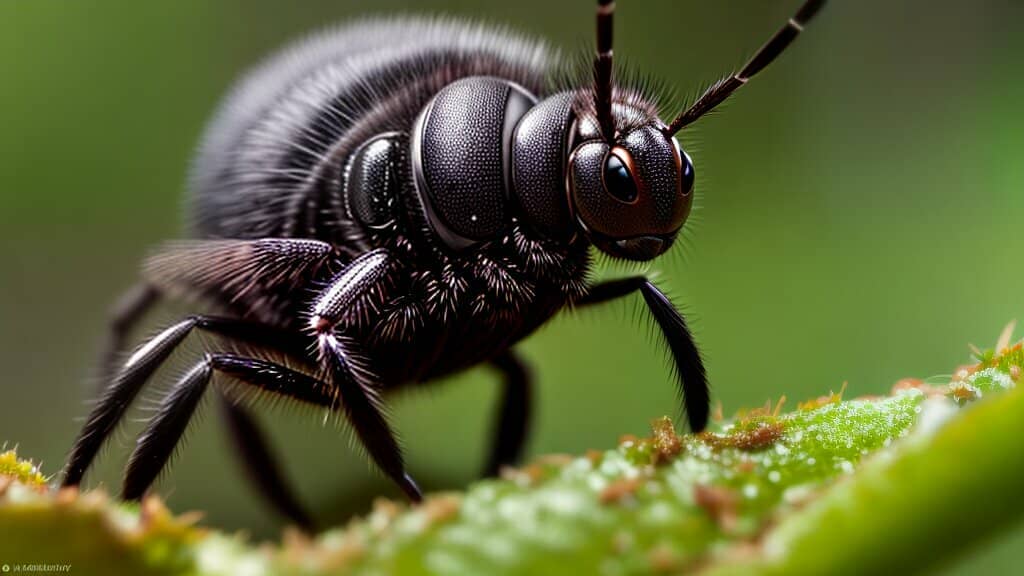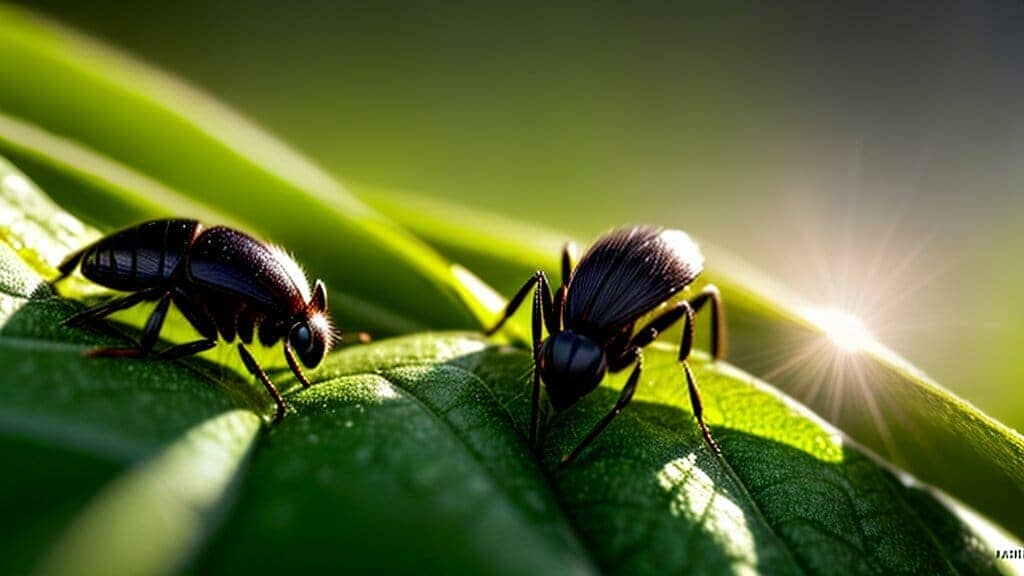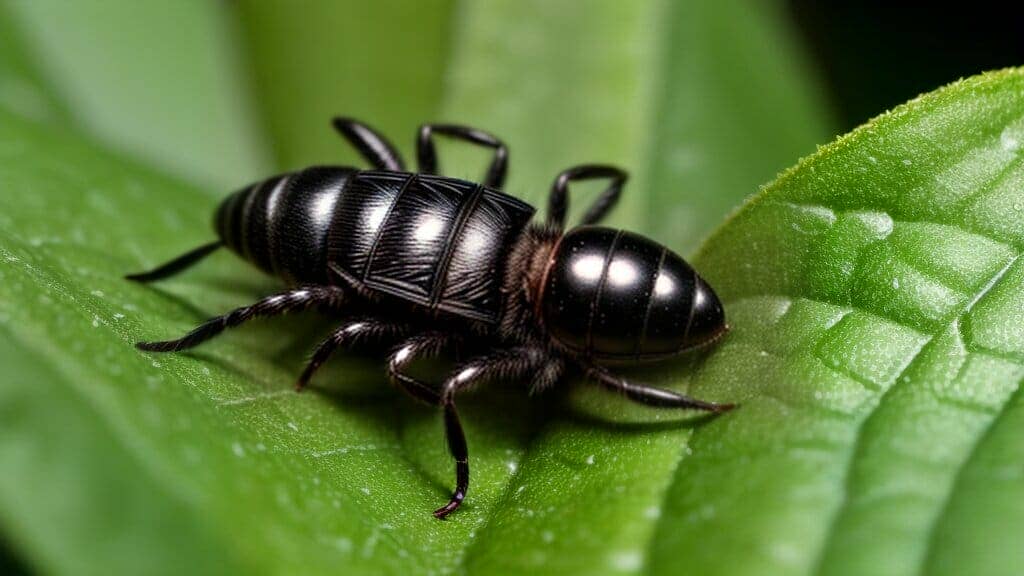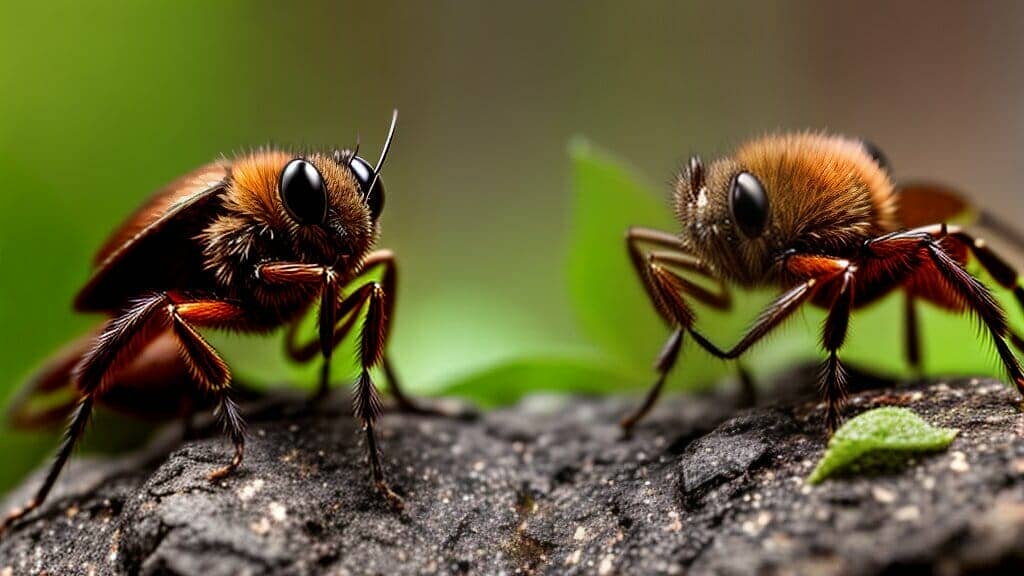Lyme Disease, a tick-borne illness, is a growing concern in Africa. Transmitted through bites from infected ticks, the disease can have severe and long-lasting effects on the human body. In recent years, the prevalence of Lyme Disease in Africa has increased, making it a significant public health issue. It is essential to understand the causes, symptoms, and diagnostic measures for this vector-borne disease, as well as effective prevention strategies to minimize the risk of infection.
Key Takeaways
- Lyme Disease is a tick-borne illness that is becoming increasingly prevalent in Africa.
- Understanding the causes, symptoms, and diagnostic measures for Lyme Disease is crucial to effectively combat the disease.
- Prevention strategies, such as avoiding tick-infested areas and using protective clothing and insect repellents, can significantly reduce the risk of infection.
Understanding Lyme Disease: Causes and Symptoms
Lyme Disease, also known as Lyme borreliosis, is a tick-borne illness caused by the bacterium Borrelia burgdorferi. It is transmitted to humans through the bite of infected ticks, typically of the Ixodes genus, commonly known as deer ticks. In Africa, the blacklegged tick, commonly found in temperate regions of the continent, is responsible for transmitting the disease.
Early symptoms of Lyme Disease in Africa, as with other regions of the world, can often be mistaken for other illnesses, such as the flu. Common symptoms include fever, headache, fatigue, and a characteristic bull’s-eye rash that can appear anywhere on the body. As the disease progresses, more severe symptoms may occur, such as joint pain and swelling, heart palpitations, and neurological problems.
It is important to note that not all infected individuals will develop the bull’s-eye rash, and some may not experience any symptoms at all. Therefore, if someone has been bitten by a tick and lives in or has traveled to an area where Lyme Disease is prevalent, they should seek medical attention as soon as possible.

“Early symptoms of Lyme Disease in Africa, as with other regions of the world, can often be mistaken for other illnesses, such as the flu.”
Diagnosing Lyme Disease in Africa
Diagnosing Lyme Disease in Africa can be a challenging process due to the absence of specific symptoms and the lack of access to specialized tests. Physicians must rely on a combination of patient history, physical examination, and laboratory tests to confirm the presence of the disease.
One of the most commonly used diagnostic methods is the two-tiered serological test, consisting of an initial enzyme-linked immunosorbent assay (ELISA) and a confirmatory Western blot. However, these tests have been criticized for their limited sensitivity and specificity, particularly in African countries where the strains of Borrelia burgdorferi (the bacteria responsible for Lyme Disease) may differ from those found in other parts of the world.
As a result, physicians in Africa must rely on clinical judgment, taking into account the patient’s symptoms, medical history, and exposure to ticks. In some cases, physicians may also use other diagnostic methods, such as polymerase chain reaction (PCR) or culture of the bacteria from blood or tissue samples.
It’s crucial to note that early diagnosis is essential for effective treatment of Lyme Disease. Delayed treatment can lead to more severe symptoms, including chronic arthritis, neurological complications, and heart problems.

Therefore, if you suspect you may have been exposed to ticks or experience any of the symptoms of Lyme Disease, such as fever, headache, and a characteristic “bull’s eye” rash, seek medical attention immediately.
Prevalence of Lyme Disease in Africa
Lyme Disease is not commonly associated with Africa; however, research shows that the disease is present in several African countries. The most affected areas are the northern and southern parts of Africa, including Morocco, Algeria, Tunisia, South Africa, and Zimbabwe.
Although data on the prevalence of Lyme Disease in Africa is limited, studies indicate that African ticks carry several Borrelia species responsible for causing the illness. According to a recent study published in the Journal of Clinical Microbiology, 7.4% of the ticks collected in Kenya tested positive for Borrelia burgdorferi, one of the primary causative agents of Lyme Disease.

The Lyme Disease prevalence rate in Africa is challenging to determine due to inadequate diagnostic tools and a lack of awareness among healthcare professionals. The incidence of Lyme Disease is likely to rise with increased awareness and the development of more accurate testing methods.
Tick-Bite Prevention Strategies in Africa
Preventing tick bites is crucial in reducing the risk of Lyme Disease in Africa. Below are some effective strategies to avoid tick bites:
- Wear long-sleeved shirts and pants, and tuck pant legs into socks or boots when outdoors.
- Use insect repellents containing DEET or picaridin. Apply to exposed skin and clothing.
- Conduct regular tick checks on yourself and pets after spending time outdoors.
- Avoid walking through tall grass or brush where ticks may be hiding.
- Stay on marked trails while hiking or walking in nature.
- Remove any attached ticks promptly using fine-tipped tweezers. Grasp the tick as close to the skin’s surface as possible and pull upward with steady, even pressure.
It is essential to practice tick-bite prevention regularly, especially in tick-infested areas. Even a single tick bite can lead to Lyme Disease, which can have severe health consequences.

Holistic Treatments for Lyme Disease in Africa
Lyme Disease is a complex and debilitating illness that requires a multifaceted treatment approach. While traditional antibiotics are commonly used, complementary and alternative therapies can also be beneficial in managing symptoms and promoting healing. Holistic treatments aim to address the whole person, including physical, emotional, and spiritual needs, to restore balance and improve quality of life.
Some natural remedies that have shown promise in treating Lyme Disease include:
| Treatment | Benefits |
|---|---|
| Herbal supplements | Boost the immune system, reduce inflammation, and fight infection. Popular herbs include Andrographis, Cat’s Claw, and Japanese Knotweed. |
| Acupuncture | Alleviate pain, reduce inflammation, and improve circulation of blood and lymphatic fluids. |
| Meditation and mindfulness practices | Reduce stress and anxiety, promote relaxation, and improve sleep quality. |
| Detoxification therapies | Support liver and kidney function, eliminate toxins from the body, and enhance immune function. Methods include sauna therapy, colon hydrotherapy, and lymphatic drainage massage. |
It’s important to note that while these treatments can be helpful, they should never replace medical advice and treatment provided by a qualified healthcare practitioner. A comprehensive and integrated treatment plan, combining conventional and alternative therapies, is the most effective approach to managing Lyme Disease.
At the Oasis Medical Institute in Tijuana, Mexico, a team of experienced healthcare professionals, led by Dr. Francisco Contreras MD, offers an integrative treatment program for Lyme Disease. The program includes a range of complementary therapies, such as hyperbaric oxygen treatment, IV vitamin therapy, and nutritional counseling, alongside conventional medical treatment. By addressing the physical, emotional, and spiritual aspects of healing, the program provides a personalized and holistic approach to Lyme Disease treatment.

Oasis Medical Institute: Lyme Disease Treatment Program
For those seeking professional treatment for Lyme Disease in Africa, the Oasis Medical Institute offers a comprehensive treatment program led by Dr. Francisco Contreras MD. With over thirty years of experience in integrative medicine, Dr. Contreras and his team provide a holistic approach to treating Lyme Disease, utilizing a range of complementary therapies to address the physical, emotional, and spiritual aspects of healing.
The Oasis Medical Institute program includes specialized diagnostics and testing to accurately identify and assess the extent of the infection, as well as personalized treatment plans tailored to the unique needs of each patient. This may include the use of natural supplements, immune boosters, and detoxification therapies to support the body’s natural healing process.

Patients also have access to the institute’s state-of-the-art facility, including a therapeutic botanical garden and an extensive library of resources on integrative medicine and Lyme Disease. The program emphasizes patient education and empowerment, with a focus on equipping individuals with the knowledge and tools they need to manage their health beyond the program.
If you or someone you know is struggling with Lyme Disease in Africa, consider seeking professional help from the Oasis Medical Institute. With a compassionate and experienced team, and a dedication to holistic healing, they offer hope and support for those affected by this challenging condition.
Prevention Tips for Travelers to Africa
If you are planning a trip to Africa, it is important to take the necessary precautions to reduce your risk of contracting Lyme Disease. Follow these prevention tips to minimize your exposure to ticks:
- Cover up: Wear long-sleeved shirts, long pants, and closed-toe shoes when spending time outdoors.
- Use insect repellent: Apply a DEET-based insect repellent to exposed skin before going outside.
- Stay on trails: Avoid walking through tall grass or brush where ticks may be present.
- Check for ticks: Conduct a thorough tick check at least once a day, paying close attention to areas such as the scalp, armpits, and groin.
- Remove ticks correctly: Use fine-tipped tweezers to grasp the tick as close to the skin as possible and pull upward with steady, even pressure. Do not twist or jerk the tick, as this can cause the mouthparts to break off and remain in the skin.
- Wash clothing and gear: Ticks can remain on clothing and gear, so wash all items in hot water and dry on high heat to kill any remaining ticks.
By taking these simple steps, you can reduce your risk of contracting Lyme Disease while traveling in Africa. Remember to seek medical attention if you suspect you may have been bitten by a tick or are experiencing symptoms of the disease.
Image source: 
Supporting Lyme Disease Research in Africa
Lyme Disease remains a relatively under-researched area within the African context, with limited data available on the prevalence of the disease and its impact on the population. However, there have been some recent developments in the field and efforts are being made to prioritize Lyme Disease research in Africa.
According to recent reports, a team of researchers from the University of Pretoria has been conducting studies on ticks and tick-borne illnesses in South Africa, including Lyme Disease. Their research aims to better understand the distribution and ecology of ticks and the pathogens they carry, as well as to develop more effective control strategies and diagnostic tools for these diseases.
In addition, the International Lyme and Associated Diseases Society (ILADS) has been actively working with healthcare providers and researchers in Africa to raise awareness and improve the diagnosis and treatment of Lyme Disease. The organization has been collaborating on research initiatives to gain more knowledge about the prevalence of the disease and to develop improved treatment options for patients.
The Global Lyme Alliance (GLA) has also been actively funding research on Lyme Disease around the world, including in Africa. Their research has focused on improving the diagnosis and treatment of Lyme Disease, as well as developing a better understanding of the transmission of the disease and the factors that contribute to its spread.
Overall, more research is needed to better understand the prevalence and impact of Lyme Disease in Africa, as well as to develop more effective prevention and treatment strategies. However, there is hope that ongoing efforts will continue to shed light on this important area of study and ultimately improve the lives of those affected by the disease.

Lyme Disease Awareness Campaigns in Africa
Efforts to raise awareness about Lyme Disease in Africa have been gaining traction in recent years. Non-profit organizations, public health agencies, and community groups have been actively engaged in various awareness campaigns, educational programs, and advocacy initiatives to promote understanding and prevention of the disease.
One such campaign is the Lyme Disease Association of South Africa (LDASA), which was founded in 2011 to support individuals affected by Lyme Disease and to increase awareness about the disease in South Africa. The LDASA provides information and resources to patients and healthcare professionals, hosts awareness events, and advocates for policy change and improved access to treatment.
Another organization working towards Lyme Disease awareness is the East African Lyme Foundation (EALF), which focuses on raising awareness and providing education about tick-borne diseases in East Africa. The EALF conducts research, provides training and resources for healthcare professionals, and engages with community members to promote tick-bite prevention.
Many African countries have also been implementing national programs to combat Lyme Disease. For instance, the Nigerian Center for Disease Control (NCDC) has developed a surveillance and response system to monitor and control tick-borne infections, including Lyme Disease. The NCDC also provides training and support for healthcare workers and conducts public education campaigns to increase awareness about tick-borne illnesses.
These campaigns and initiatives play a crucial role in increasing public awareness about Lyme Disease in Africa. By educating communities about the dangers of tick-borne illnesses and promoting effective prevention strategies, we can work towards reducing the incidence of Lyme Disease and protecting the health of vulnerable populations.

Challenges in Lyme Disease Control in Africa
Africa faces several challenges in controlling the spread of Lyme Disease. One of the biggest challenges is the lack of awareness and knowledge about the disease among the general population. Many people in Africa have never heard of Lyme Disease, and as a result, they do not know how to protect themselves from tick bites or recognize the symptoms of the disease.
Another significant challenge is the lack of resources and infrastructure to effectively address the issue. In many parts of Africa, there are limited public health resources available, making it difficult to implement effective prevention and control measures. In addition, a lack of funding for research and intervention programs also hinders the ability to combat Lyme Disease.
Furthermore, there is a significant lack of coordination and collaboration between different sectors of society. Lyme Disease control and prevention require a multi-sectoral approach that involves cooperation between public health agencies, veterinary services, and the private sector. Without this coordinated effort, it is difficult to establish effective surveillance and response systems to address the disease.
Finally, the impact of climate change cannot be ignored. As temperatures rise and rainfall patterns change, the distribution and prevalence of ticks in Africa may increase. This could lead to a higher incidence of Lyme Disease in areas where it was previously uncommon and further complicate efforts to control the disease.
Despite these challenges, there is hope for the future. Through increased awareness and education, improved funding and resources, and more effective collaboration between different sectors, Lyme Disease control and prevention can be improved in Africa.

Future Prospects for Lyme Disease in Africa
Although Lyme Disease remains a relatively new concept in Africa, there is growing interest in understanding and combating its spread. Scientists and researchers are working hard to develop new methods for preventing tick bites and controlling tick populations, and to improve diagnostic tools and treatment protocols.
One area of focus is the development of effective vaccines against Lyme borreliosis, which would provide a long-term solution to the disease. Currently, no vaccine is available for human use, but researchers are exploring different approaches and technologies that could lead to the development of a safe and effective Lyme vaccine.
Another promising area of research is the use of novel technologies to detect Lyme Disease in its early stages. Researchers are developing new diagnostic tools that can identify the disease more quickly and accurately, potentially leading to earlier treatment and better outcomes for patients.
Climate change is also expected to impact the spread of Lyme Disease in Africa, as it alters the habitats and distribution of tick species. Scientists are studying the potential effects of climate change on tick populations and the risks of tick-borne illnesses in different regions, in order to inform policies and programs that can reduce the impact of these diseases.
Despite some challenges, the future prospects for Lyme Disease in Africa are promising. With continued research and investment, it may be possible to control the spread of the disease and improve the lives of those affected by it.

Conclusion
As Lyme Disease continues to be a significant health concern worldwide, it is important to understand its impact on the African population. With the increasing prevalence of tick-borne illnesses in Africa, including Lyme Disease, prevention strategies and early diagnosis are crucial in mitigating the spread of the disease.
Through this article, we have explored the causes and symptoms of Lyme Disease, as well as the challenges faced in diagnosing and treating it in Africa. We have also discussed effective prevention strategies and alternative treatment options, including the integrative program offered by the Oasis Medical Institute in Tijuana, Mexico.
However, there is still much work to be done in terms of research and public health interventions in Africa. As we look to the future, it is essential to continue supporting Lyme Disease research, raising awareness about the disease, and addressing the challenges in its control.
Overall, by taking necessary precautions and seeking professional help, we can work towards preventing the spread of Lyme Disease in Africa and improving the health of affected individuals and communities.
FAQ
Q: What is Lyme Disease?
A: Lyme Disease is a tick-borne illness caused by the bacteria Borrelia burgdorferi. It is primarily transmitted through the bite of infected ticks.
Q: Is Lyme Disease prevalent in Africa?
A: Lyme Disease has been reported in various countries in Africa, although its prevalence may vary. It is important to be aware of the risk when traveling to tick-infested areas.
Q: What are the symptoms of Lyme Disease?
A: Common symptoms of Lyme Disease include fever, fatigue, headaches, muscle and joint pain, and a characteristic skin rash known as erythema migrans.
Q: How is Lyme Disease diagnosed in Africa?
A: The diagnosis of Lyme Disease in Africa can be challenging due to limited access to specialized testing. However, healthcare professionals may use a combination of clinical symptoms, exposure history, and available laboratory tests to make a diagnosis.
Q: What are the prevention strategies for tick bites in Africa?
A: To prevent tick bites in Africa, it is recommended to wear protective clothing, use insect repellents, avoid tick-infested areas, and conduct regular tick checks on the body and clothing.
Q: Are there holistic treatments available for Lyme Disease in Africa?
A: Holistic treatment options for Lyme Disease in Africa may include alternative therapies and complementary approaches. The Oasis Medical Institute in Tijuana, Mexico, offers an integrative treatment program led by Dr. Francisco Contreras MD.
Q: What is the Lyme Disease treatment program at Oasis Medical Institute?
A: The Lyme Disease treatment program at Oasis Medical Institute, led by Dr. Francisco Contreras MD, takes an integrative medicine approach to address the various aspects of Lyme Disease. Their program focuses on personalized treatment plans and comprehensive care.
Q: What prevention tips should travelers to Africa follow?
A: Travelers to Africa should follow prevention tips such as avoiding tick-infested areas, wearing protective clothing, using insect repellents, and conducting regular tick checks to minimize the risk of Lyme Disease.
Q: What is the current state of Lyme Disease research in Africa?
A: Lyme Disease research in Africa is ongoing, with studies focusing on various aspects of the disease, including its prevalence, tick species involved, and potential treatment options. Further research is needed to improve our understanding and management of the disease.
Q: How are Lyme Disease awareness campaigns conducted in Africa?
A: Lyme Disease awareness campaigns in Africa involve various initiatives, including educational programs, community engagement, and the dissemination of information to raise awareness about the disease and its prevention.
Q: What are the challenges in Lyme Disease control in Africa?
A: Challenges in Lyme Disease control in Africa include limited resources, lack of awareness, and the need for improved surveillance and public health interventions. A multi-sectoral approach is crucial to effectively combat the disease.
Q: What are the future prospects for Lyme Disease in Africa?
A: The future prospects for Lyme Disease in Africa include advancements in prevention methods, treatment approaches, and the potential impact of climate change on the distribution of ticks and the disease.
Dr. Francisco Contreras, MD is a renowned integrative medical physician with over 20 years of dedicated experience in the field of integrative medicine. As the Medical Director of the Oasis of Hope Hospital in Tijuana, Mexico, he has pioneered innovative treatments and integrative approaches that have been recognized globally for the treatment of cancer, Lyme Disease, Mold Toxicity, and chronic disease using alternative treatment modalities. Dr. Contreras holds a medical degree from the Autonomous University of Mexico in Toluca, and speciality in surgical oncology from the University of Vienna in Austria.
Under his visionary leadership, the Oasis of Hope Hospital has emerged as a leading institution, renowned for its innovative treatments and patient-centric approach for treating cancer, Lyme Disease, Mold Toxicity, Long-Haul COVID, and chronic disease. The hospital, under Dr. Contreras's guidance, has successfully treated thousands of patients, many of whom traveled from different parts of the world, seeking the unique and compassionate care the institution offers.
Dr. Contreras has contributed to numerous research papers, articles, and medical journals, solidifying his expertise in the realm of integrative medicine. His commitment to patient care and evidence-based treatments has earned him a reputation for trustworthiness and excellence. Dr. Contreras is frequently invited to speak at international conferences and has been featured on CNN, WMAR2 News, KGUN9 News, Tyent USA, and various others for his groundbreaking work. His dedication to the medical community and his patients is unwavering, making him a leading authority in the field.
Contreras has authored and co-authored several books concerning integrative therapy, cancer, Lyme Disease and heart disease prevention and chronic illness, including "The Art Science of Undermining Cancer", "The Art & Science of Undermining Cancer: Strategies to Slow, Control, Reverse", "Look Younger, Live Longer: 10 Steps to Reverse Aging and Live a Vibrant Life", "The Coming Cancer Cure Your Guide to effective alternative, conventional and integrative therapies", "Hope Medicine & Healing", "Health in the 21st Century: Will Doctors Survive?", "Healthy Heart: An alternative guide to a healthy heart", “The Hope of Living Cancer Free”, “Hope Of Living Long And Well: 10 Steps to look younger, feel better, live longer” “Fighting Cancer 20 Different Ways”, "50 Critical Cancer Answers: Your Personal Battle Plan for Beating Cancer", "To Beat . . . Or Not to Beat?", and “Dismantling Cancer.”






















